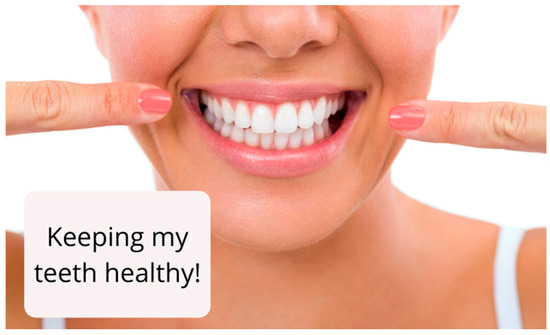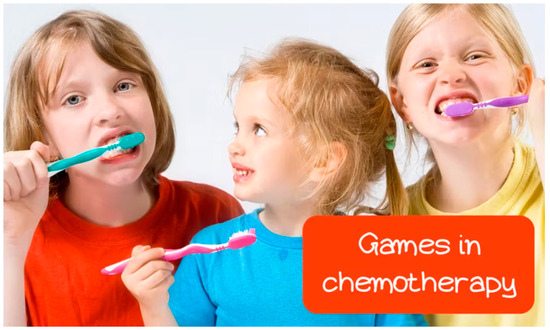The mouth is an important target of cancer therapies, while oral supportive oncology has emerged as a new field in dentistry.
Head and neck radiotherapy, including the oral structures, the teeth, the jawbones, the mandible, and the salivary glands may have a deleterious effect for the patient. Mucositis, oral and systemic infections through the disruption of the oral mucosa, xerostomia, radiation dental decay, radiation-related necrosis of the jawbone, fibrosis, difficulty in food intake, speech problems, sleep problems, work, and other socioeconomic issues are important sequalae related to head and neck radiotherapy [Figure 1]. Bhandari et al. [1] showed that 5 years after radiotherapy to head and neck 97% of the teeth will have developed extensive dental caries if no supportive dental health care measures have been applied (see Figure 1).

Figure 1.
Patient smiles and is happy to keep teeth clean and healthy. (Reprinted with permission from CureCancer PC platform, section Oral health (5 November 2021). Copyright 2021 CureCancer.gr, which obtained the license to use the photo from Canva.com).
A study from Australia described the high nutritional load of patients with head and neck and oral cancer. Some patients described their difficulties in food intake as “a battle to eat”, having oral pain, numbness, taste problems, and dry mouth [2]. The inability to take food may be related to negative effects on patients and their treatment, such as treatment delays, therapy interruptions, and emergency admissions to hospital.
Chemotherapy and hormonal therapies may also have adverse side effects on dental and periodontal disease, while patients with good oral and periodontal health have decreased risk for oral toxicities [3,4,5]. Non-surgical periodontal treatment during chemotherapy can prevent exacerbations of periodontitis and reduce the markers of inflammatory disease [3]. Patients with good oral care and oral health had lower risk of periodontal disease [4]. The above findings are particularly important since dental or periodontal infection are the most important risk factors for medication-related osteonecrosis of the jaw.
Hormonal therapy may affect dental health, too (see Figure 2).

Figure 2.
Patient with good teeth smiles and holds a fresh watermelon. (Reprinted with permission from CureCancer PC platform, section Oral health (5 November 2021). Copyright 2021 CureCancer.gr, which obtained the license to use the photo from Canva.com).
A study showed that patients who receive tamoxifen experience increased tooth loss [5].
New therapies in oncology, such as targeted biological therapies, inhibitors of angiogenesis, immunotherapy, and other drugs, which may be administered in combinations, have changed the profile of oral, dental, and jawbone toxicities [6,7]. Painful oral mucosal ulcers, bleeding, and oral mucosal infections during cancer therapy, or necrosis of the jaw bones, weeks, and months after therapy, may appear as new toxicities, and need our attention to early and effective diagnosis and management [8]. Cases of dental infection and abscess may be representing an early-stage osteonecrosis of the jaw [9].
Based on study findings and science, we can confirm that good oral health can prevent or reduce the oral toxicity of cancer therapies.
Well-informed patients on potential oral problems due to cancer therapy, who were also educated by their dentists to perform good oral hygiene, had less oral toxicity [10]. In another study, preventive oral care protocol, including patient education, prevented or reduced cancer therapy toxicity in adults as well as in pediatric patients [11] (see Figure 3).

Figure 3.
Little children perform their oral care, after instructional games and videos. (Image from CureCancer, https://curecancer.eu/news/post/games-and-video-presentations-to-prevent-oral-mucositis-in-child, accessed on 28 September 2023. Photo by Caju Gomes on Unsplash).
Funding
This research received no external funding.
Conflicts of Interest
The author declare no conflict of interest.
References
- Βhandari, S.; Soni, B.W.; Ghoshal, S.S. Impact of non-compliance with oral care on radiation in head and neck cancer survivors. Support Care Cancer 2021, 29, 4783–4790. [Google Scholar] [CrossRef] [PubMed]
- Hazzard, E.; Haughton, J.; Fish, J.; Milosavljevic, M.; Dickson, V.; Boehm, J.; Walton, K.; Ashford, B. The experience of nutritional care according to patients with head and neck cancer involved with a combined dietitian, specialist nurse and speech pathologist clinic in a regional Australia: A quantitative longitudinal study. Support Care Cancer 2021, 29, 4329–4337. [Google Scholar] [CrossRef] [PubMed]
- Villafluerte, K.R.V.; Dantas, F.T.; Taba, M., Jr.; Messora, M.; Candido Dos Reis, F.J.; Carrara, H.H.A.; Martinez, C.d.J.H.; Gozzo, T.; Daniela Bazan Palioto, D.B. Effects of non-surgical periodontal therapy on the cytokine profile in gingival crevicular fluid of breast cancer patients with periodontitis undergoing chemotherapy. Support Care Cancer 2021, 29, 7505–7513. [Google Scholar] [CrossRef] [PubMed]
- Garcia-Chias, B.; Figuero, E.; Castelo-Fernández, B.; Cebrián-Carretero, J.L.; Cerero-Lapiedra, R. Prevalence of oral side effects of chemotherapy and its relationship with periodontal risk: A cross sectional study. Support Care Cancer 2019, 27, 3479–3490. [Google Scholar] [CrossRef] [PubMed]
- Sensever de Araujo, F.; Jardim, L.C.; Ferrazzo, K.L.; Skupien, J.A.; Antoniazzi, R.P. Association between tamoxifen and tooth loss in women with breast cancer. Support Care Cancer 2022, 30, 8193–8199. [Google Scholar] [CrossRef] [PubMed]
- Fusco, V.; Santini, D.; Armento, G.; Tonini, G.; Campisi, G. Osteonecrosis of the jaw beyond antiresorptive (bone-targeted) agents: New horizons in oncology. Expert Opin. Drug Saf. 2016, 15, 925–935. [Google Scholar] [CrossRef] [PubMed]
- Nicolatou-Galitis, O.; Psyrri, A.; Tsoukalas, N.; Galitis, E.; Linardou, H.; Galiti, D.; Athanasiadis, I.; Kalapanida, D.; Razis, E.; Katirtzoglou, N.; et al. Oral Toxicities in Cancer Patients, Who Receive Immunotherapy: A Case Series of 24 Patients. Oral 2023, 3, 123–133. [Google Scholar] [CrossRef]
- Schiodt, M.; Otto, S.; Fedele, S.; Bedogni, A.; Nicolatou-Galitis, O.; Guggenberger, R.; Herlofson, B.B.; Ristow, O.; Kofod, T. Workshop of European task force on medication-related osteonecrosis of the jaw—Current challenges. Oral Dis. 2019, 25, 1815–1821. [Google Scholar] [CrossRef] [PubMed]
- Galiti, D.; Karayanni, A.; Tsiklakis, K.; Psyrri, A. Medication Related Osteonecrosis of the Jaw (MRONJ). Review and recent advances. Forum Clin. Oncol. 2023, 13, 38–47. [Google Scholar] [CrossRef]
- Morais, M.O.; Elias, M.R.A.; Leles, C.R.; Donrado, J.C.; Mendonca, P.E.F. The effect of preventive oral care on treatment outcomes of a cohort of oral cancer patients. Support Care Cancer 2016, 24, 1663–1670. [Google Scholar] [CrossRef] [PubMed]
- Bezerra, M.P.M.; Sampaio, M.E.A.; Dos Santos, F.G.; Ribeiro, I.L.A.; Santiago, B.M.; de Sousa, S.A.; Valença, A.M.G. The effectiveness of an oral health education and prevention program on the incidence and severity of oral; mucositis in pediatric cancer patients: A non-randomized controlled study. Support Care Cancer 2021, 29, 7877–7885. [Google Scholar] [CrossRef] [PubMed]
Disclaimer/Publisher’s Note: The statements, opinions and data contained in all publications are solely those of the individual author(s) and contributor(s) and not of MDPI and/or the editor(s). MDPI and/or the editor(s) disclaim responsibility for any injury to people or property resulting from any ideas, methods, instructions or products referred to in the content. |
© 2023 by the author. Licensee MDPI, Basel, Switzerland. This article is an open access article distributed under the terms and conditions of the Creative Commons Attribution (CC BY) license (https://creativecommons.org/licenses/by/4.0/).